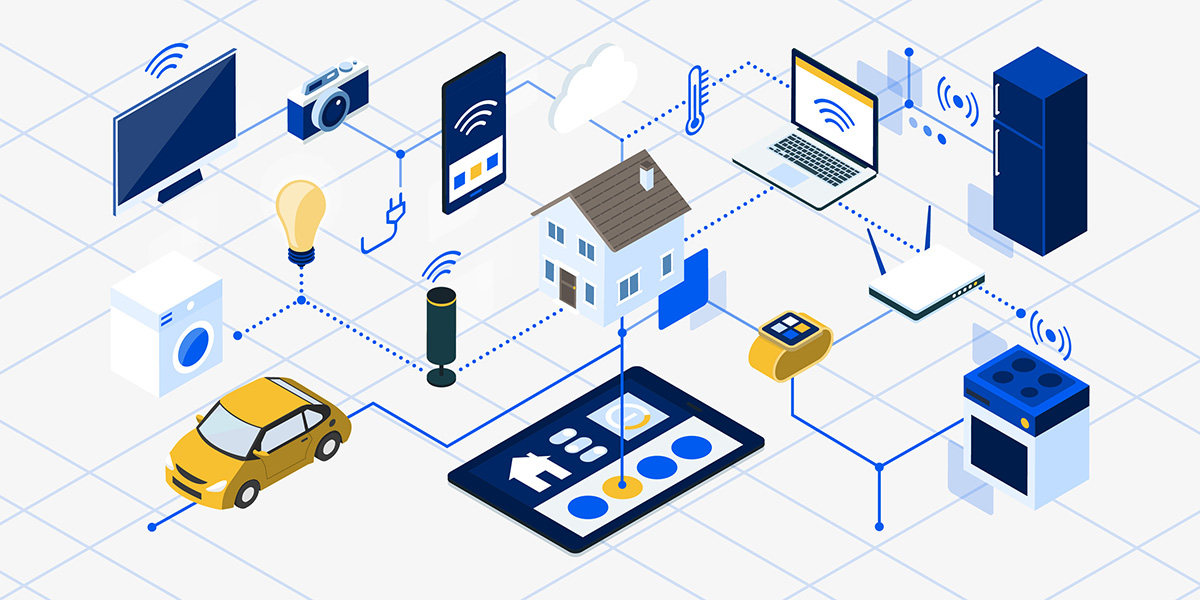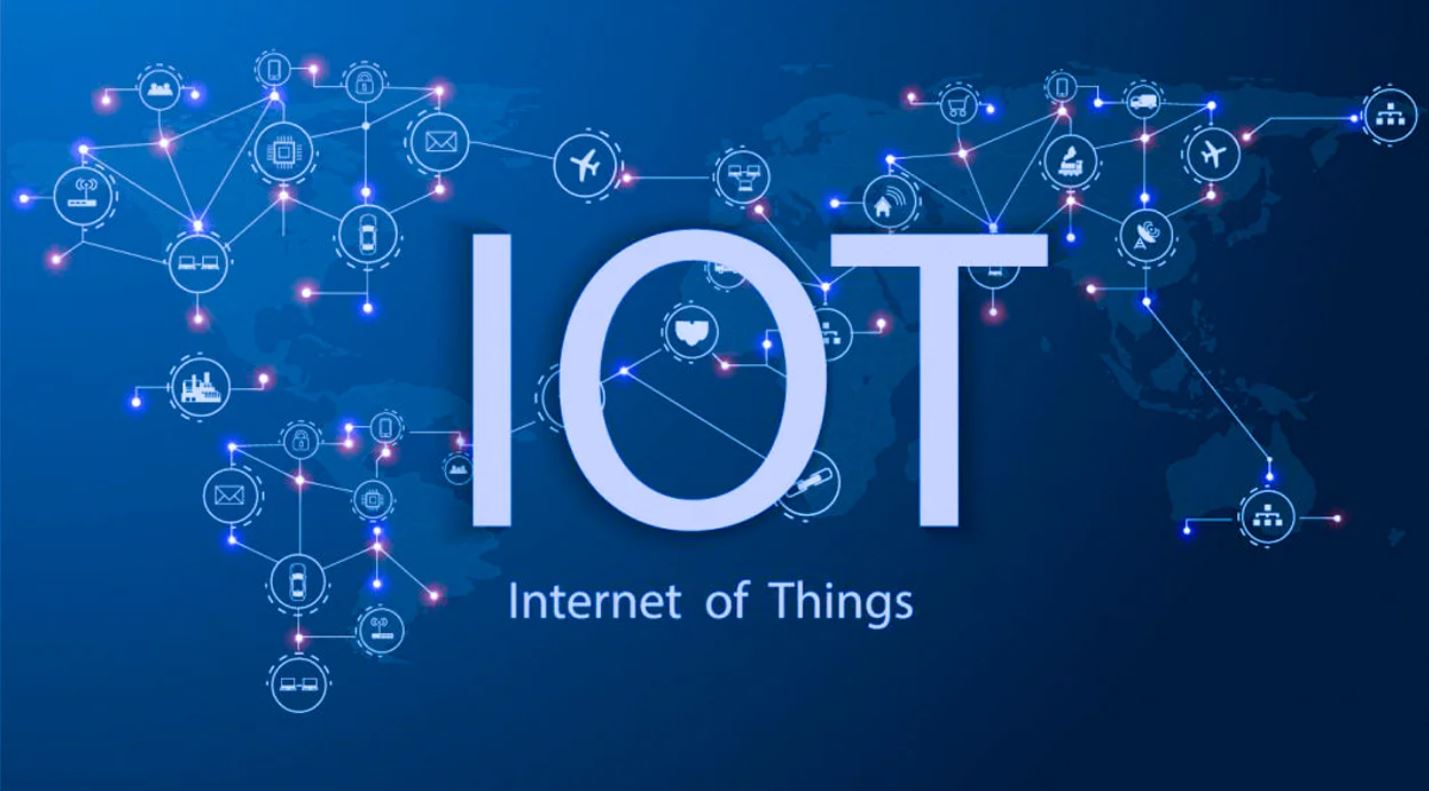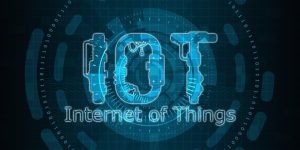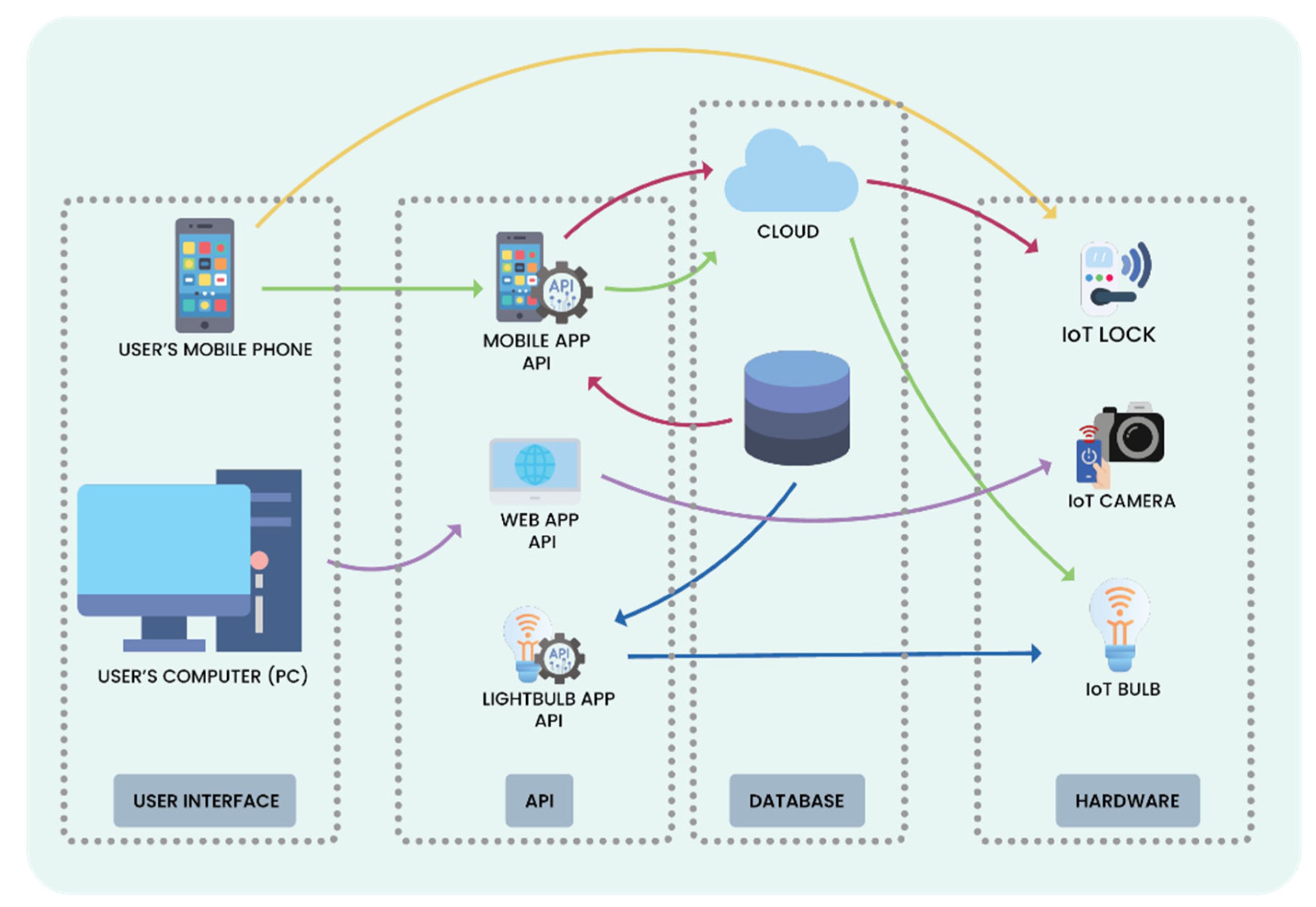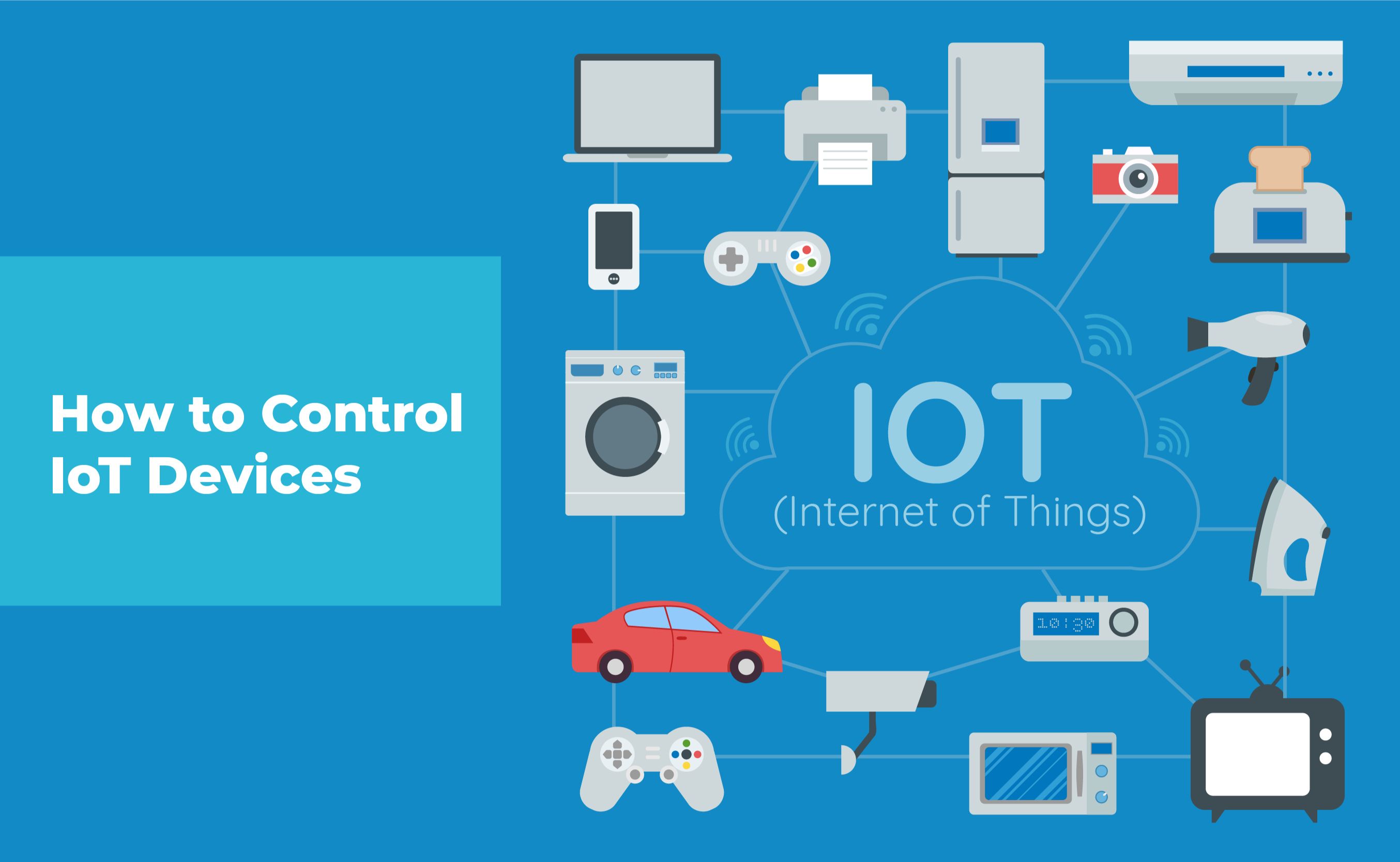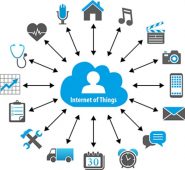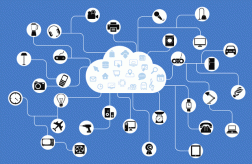Introduction
The Internet of Things (IoT) has revolutionized the way we live and interact with technology. It refers to the network of interconnected devices that can collect and exchange data over the internet. From smart thermostats and security cameras to voice assistants and fitness trackers, IoT devices have found their way into many households, bringing unprecedented levels of convenience and functionality. By seamlessly integrating these devices into our homes, we can automate tasks, improve safety and security, and even reduce our environmental footprint.
The rapid growth of IoT devices in recent years has transformed our homes into smart, connected spaces. Instead of manually controlling appliances or devices, we can now remotely manage and monitor them using our smartphones or voice commands. The possibilities seem endless – imagine adjusting the temperature while you are commuting home, or receiving notifications on your phone when someone arrives at your doorstep.
However, as with any technological advancement, there are considerations and potential drawbacks to be aware of. Privacy concerns, data security risks, compatibility issues, and the reliance on technology are among the challenges that come with integrating IoT devices into our homes. In this article, we will explore the benefits of using IoT devices in your home, as well as the potential risks and challenges that you should be mindful of. By understanding these factors, you can make informed decisions and ensure a safe and efficient IoT ecosystem within your home.
What are Internet of Things (IoT) devices?
Internet of Things (IoT) devices are physical objects embedded with sensors, software, and connectivity features that enable them to collect and exchange data over the internet. These devices can range from everyday household items like smart thermostats, lighting systems, and appliances to wearable devices, security systems, and even industrial machinery. The key characteristic of IoT devices is their ability to communicate and interact with other devices, often through wireless networks, creating a vast interconnected system.
IoT devices typically consist of three components: sensors, connectivity, and data processing capabilities. Sensors capture different types of data, such as temperature, humidity, motion, or even biometric information, depending on the specific functionality of the device. Connectivity enables the device to transmit and receive data over the internet, allowing for remote access and control. Data processing capabilities analyze the collected data and perform actions based on predefined rules or user preferences.
The data collected by IoT devices can be utilized in various ways. For instance, a smart thermostat can monitor the temperature in a room and automatically adjust it based on occupancy patterns and user preferences. This not only enhances comfort but also helps conserve energy. Similarly, a wearable fitness tracker can monitor your physical activity and heart rate, providing insights for improving overall health and well-being.
IoT devices provide a level of connectivity and automation that was unimaginable just a few years ago. The ability to remotely control and monitor various aspects of our homes and lifestyles brings immense convenience and efficiency. Whether it’s remotely adjusting the lighting, checking the status of home security cameras, or receiving alerts about energy usage, IoT devices have the potential to transform our daily lives in ways that were previously unimaginable.
Benefits of using IoT devices in your home
Integrating Internet of Things (IoT) devices into your home can bring a wide range of benefits that enhance convenience, safety, security, and energy efficiency. Here are some key advantages of using IoT devices in your home:
- Increased convenience and efficiency: IoT devices allow you to automate routine tasks and control various aspects of your home with ease. From setting up automated lighting schedules to remotely managing appliances and entertainment systems, these devices offer convenience and simplify your daily life.
- Enhanced safety and security: IoT devices provide advanced security features that help protect your home and loved ones. Smart surveillance cameras, doorbell cameras, and alarm systems can be monitored and activated remotely, providing real-time alerts and deterring potential intruders.
- Energy savings and environmental benefits: With IoT devices, you can optimize energy consumption and reduce your environmental footprint. Smart thermostats can learn your temperature preferences and adjust accordingly, saving energy when you’re away. Smart lighting systems can automatically turn off lights in unoccupied rooms, reducing electricity usage.
- Improved healthcare monitoring: IoT devices in the healthcare field, such as wearable fitness trackers or medical monitoring devices, can collect and transmit vital health data to healthcare professionals. This enables remote monitoring, timely interventions, and improved healthcare outcomes.
- Streamlined home management: IoT devices can streamline various aspects of home management. Smart home hubs or voice assistants can centralize control over multiple devices, allowing you to manage them through a single interface or voice commands. This eliminates the need for multiple apps or control panels.
These benefits collectively contribute to a more comfortable, secure, and environmentally conscious living environment. By embracing IoT devices, you can create a connected home that adapts to your needs and preferences while improving overall daily life experiences.
Increased convenience and efficiency
One of the biggest advantages of using Internet of Things (IoT) devices in your home is the increased convenience and efficiency they bring to your daily life. These devices are designed to automate routine tasks and provide seamless control over various aspects of your home. Here are some ways in which IoT devices enhance convenience and efficiency:
- Remote control: IoT devices enable you to control and monitor your home from anywhere in the world. With your smartphone or a dedicated app, you can remotely adjust the thermostat, turn on/off appliances, or even unlock doors. This level of control allows you to manage your home efficiently, whether you’re at work, on vacation, or simply relaxing on the couch.
- Automation: IoT devices can automate repetitive tasks, saving you time and effort. For example, you can set up schedules for your lighting system to turn on and off at specific times, ensuring that the lights are always on when needed and helping to conserve energy when nobody is home. Similarly, smart appliances can automatically adjust their settings or notify you when maintenance is required.
- Intelligent assistants: Voice-controlled assistants like Amazon’s Alexa or Google Assistant can integrate with various IoT devices in your home. This allows you to effortlessly control multiple devices through simple voice commands. For example, you can ask your assistant to dim the lights, adjust the temperature, and play your favorite music without lifting a finger.
- Data-driven insights: IoT devices collect data about your usage patterns, which can provide valuable insights for optimizing efficiency. For instance, a smart energy monitor can track your energy usage and provide suggestions on how to reduce consumption, helping you make informed decisions to lower your utility bills. Similarly, a smart irrigation system can adjust watering based on weather conditions and soil moisture levels, ensuring optimal water usage for your plants.
- Integration and compatibility: Many IoT devices can be integrated into a centralized hub, allowing for seamless management and coordination. This means that you can control multiple devices, such as lighting, thermostats, security systems, and entertainment systems, through a single app or interface. This eliminates the need to switch between different apps or control panels, streamlining the user experience.
By incorporating IoT devices into your home, you can experience a new level of convenience and efficiency. From simplifying daily tasks to gaining better control over your home environment, these devices empower you to create a living space that fits your lifestyle and preferences.
Enhanced safety and security
One of the significant benefits of incorporating Internet of Things (IoT) devices into your home is the enhanced safety and security they provide. These devices offer advanced features that can help protect your home, belongings, and loved ones. Here are some ways in which IoT devices contribute to enhanced safety and security:
- Smart surveillance cameras: IoT-enabled security cameras provide real-time monitoring and recording of your home. You can access the camera feeds remotely through a smartphone or computer, allowing you to keep an eye on your property from anywhere. Some cameras also offer motion detection, facial recognition, and even night vision, ensuring comprehensive surveillance.
- Doorbell cameras: IoT-powered video doorbell cameras allow you to see and communicate with visitors at your front door, even when you’re not home. You can receive notifications on your smartphone when someone rings the doorbell or activates the motion sensor, providing an additional layer of security and enabling you to screen visitors before opening the door.
- Smart locks: IoT-enabled smart locks provide convenient and secure access to your home. With features like keyless entry, temporary digital keys, and remote access, you can control who has access to your property. In case you forget to lock the door, you can lock it remotely using your smartphone, ensuring peace of mind wherever you are.
- Alarm systems: IoT-based alarm systems allow you to monitor and secure your home against burglaries and intrusions. These systems can be easily integrated with sensors, motion detectors, and door/window sensors to provide comprehensive coverage. In the event of any suspicious activity, you’ll receive instant notifications, and the alarm system can be configured to alert the authorities if necessary.
- Smart sensors: IoT devices offer various sensors that enhance home safety. Smoke detectors, carbon monoxide detectors, and water leak sensors can detect potential hazards and send immediate alerts to your smartphone, giving you the opportunity to take prompt action and prevent further damage.
By incorporating these IoT devices into your home, you can significantly enhance the safety and security of your living space. Not only do these devices provide proactive monitoring and real-time alerts, but they also act as deterrents, discouraging potential intruders. With IoT technology, you can have peace of mind knowing that your home and loved ones are protected around the clock.
Energy savings and environmental benefits
Integrating Internet of Things (IoT) devices into your home offers significant energy savings and environmental benefits. These devices are designed to optimize energy consumption, reduce wastage, and promote sustainable living. Here are some ways in which IoT devices contribute to energy savings and environmental benefits:
- Smart thermostats: IoT-enabled thermostats learn your temperature preferences and occupancy patterns and adjust the temperature accordingly. This helps you avoid unnecessary heating or cooling when no one is home, resulting in significant energy savings. Additionally, you can control and monitor your thermostat remotely, allowing you to adjust the temperature before you arrive home, further improving efficiency.
- Smart lighting systems: IoT-powered lighting systems can automatically adjust brightness levels and turn off lights in unoccupied areas. Motion sensors detect activity in a room and activate or deactivate lights accordingly. By eliminating the need for manual control and ensuring lights are only used when required, these systems help reduce electricity usage and lower utility bills.
- Energy monitoring devices: IoT devices that monitor energy consumption provide real-time insights into your usage patterns. By tracking and analyzing your energy usage data, you can identify areas of high consumption and make informed decisions to reduce energy waste. This encourages more energy-efficient habits and helps lower your carbon footprint.
- Smart appliances: IoT-enabled appliances, such as refrigerators, washing machines, and dishwashers, can optimize their energy usage based on usage patterns, time of day, or energy tariffs. These appliances can also be monitored and controlled remotely, allowing you to manage energy consumption even when you’re not at home.
- Renewable energy integration: IoT devices can integrate with renewable energy systems, such as solar panels or wind turbines. They can monitor and optimize the energy generated to ensure maximum utilization. Additionally, IoT devices can analyze weather patterns and adjust energy consumption accordingly, optimizing energy usage when renewable sources are at their peak production.
By incorporating these IoT devices into your home, you can not only reduce your energy consumption and lower utility bills but also contribute to a more sustainable future. These devices promote responsible energy management and encourage environmentally friendly choices. With IoT technology, you can actively participate in creating a greener and more energy-efficient home environment.
Potential risks and challenges of using IoT devices
While Internet of Things (IoT) devices offer numerous benefits, it is important to be aware of the potential risks and challenges they present. Understanding these concerns can help you make informed decisions and take necessary precautions to ensure a secure and reliable IoT ecosystem in your home. Here are some potential risks and challenges of using IoT devices:
- Privacy concerns: IoT devices collect and transmit large amounts of data, including personal and sensitive information. There is a risk of this data being intercepted or compromised, potentially leading to privacy breaches. It is crucial to understand the privacy policies and data handling practices of the IoT devices you use and take steps to secure your data.
- Data security risks: IoT devices can be vulnerable to cyber-attacks. Weak security measures or outdated software/firmware can make them an easy target for hackers. This can result in unauthorized access to your devices, data breaches, or even control of your IoT devices by malicious actors. Regularly updating the software and firmware of your devices, using strong and unique passwords, and securing your home network can help mitigate these risks.
- Compatibility issues: Some IoT devices may not be compatible with each other or with your existing home infrastructure. This can lead to connectivity issues, limited functionality, or the need to purchase additional devices or hubs to ensure compatibility. Before purchasing IoT devices, it is important to check their compatibility and ensure they can seamlessly integrate into your home environment.
- Dependency on technology: Relying heavily on IoT devices for everyday tasks can lead to dependency on technology. In case of device malfunctions, software bugs, or connectivity issues, you may face disruptions in your daily routines. It is important to have backup options or manual alternatives in place to mitigate the impact of any potential failures.
- Limited lifespan and support: IoT devices can become obsolete over time as technology evolves rapidly. Manufacturers may stop providing updates, patches, or support for older devices, leaving them more vulnerable to security risks. Being aware of the lifespan and support provided for IoT devices can help you make informed decisions about their usage and longevity.
Understanding and addressing these risks and challenges is crucial for maintaining a secure and reliable IoT ecosystem in your home. By being proactive in your approach to privacy, security, compatibility, and technology dependencies, you can enjoy the benefits of IoT devices while mitigating potential risks.
Privacy concerns and data security risks
Privacy concerns and data security risks are significant considerations when integrating Internet of Things (IoT) devices into your home. These devices collect and transmit sensitive data, which, if mishandled or accessed by unauthorized individuals, can lead to privacy breaches and potential harm. Here are some key privacy concerns and data security risks associated with IoT devices:
- Data collection and sharing: IoT devices collect a vast amount of data about individuals, including personal and behavioral information. There is a concern that this data may be shared with third parties without proper consent or used for purposes that individuals are unaware of. It is important to thoroughly review the privacy policies and terms of service of IoT devices before using them to understand how your data is collected, stored, and shared.
- Unauthorized access: IoT devices are susceptible to security breaches, as they often connect to the internet and may have weak security measures in place. Cybercriminals can exploit vulnerabilities in these devices to gain unauthorized access to your network, compromising both your privacy and security. Regularly updating the software and firmware of IoT devices, using strong and unique passwords, and securing your Wi-Fi network are crucial steps to mitigate unauthorized access.
- Data breaches: IoT devices can be targeted by hackers aiming to obtain personal data for malicious purposes. A data breach can result in the exposure of sensitive information, such as home addresses, financial data, or login credentials. It is important to choose IoT devices from reputable manufacturers with a strong track record in security and privacy, as they are more likely to have robust security measures in place.
- Data anonymization: IoT devices often collect data that can be used to identify individuals. Ensuring effective data anonymization techniques are in place is crucial to protect the privacy of users. Anonymizing or encrypting data at the device level before transmitting it can help mitigate the risk of personal data being linked to specific individuals.
- Insecure communication: IoT devices transmit data over networks, which can be intercepted if proper encryption measures are not implemented. Without adequate encryption protocols, sensitive information may be exposed during transmission, making it vulnerable to eavesdropping or tampering. Using devices that support secure communication protocols, such as Transport Layer Security (TLS) or Secure Shell (SSH), is essential to protect data during transmission.
To mitigate privacy concerns and data security risks associated with IoT devices, it is important to be proactive in protecting your privacy and securing your network. Regularly update your device’s software and firmware, use strong and unique passwords, and be cautious about the data you share or give access to. By adopting best security practices and being informed about the privacy policies and data handling practices of IoT devices, you can minimize the potential risks and ensure a more secure IoT ecosystem within your home.
Compatibility issues and dependency on technology
When integrating Internet of Things (IoT) devices into your home, compatibility issues and dependency on technology are among the challenges that you may encounter. These concerns can impact the functionality and effectiveness of your IoT ecosystem. Here are some key considerations regarding compatibility and dependency associated with IoT devices:
- Interoperability: IoT devices may not always be compatible with each other or with existing home infrastructure. This can lead to connectivity issues, limited functionality, or the need to purchase additional devices or hubs to ensure compatibility. Before investing in IoT devices, it is important to check their compatibility with existing devices and systems and ensure seamless integration.
- Fragmented ecosystems: IoT devices often operate within their own ecosystems or platforms, each with its own set of protocols and standards. This can create challenges when attempting to connect and control devices from different manufacturers using a single app or interface. Consolidating different devices under a unified platform or selecting devices that support open standards can help address compatibility issues.
- Dependency on network stability: IoT devices rely on stable internet connectivity to function properly. In the event of network outages or connectivity issues, the functionality of these devices may be disrupted. Depending heavily on IoT devices for critical functions, such as security or environmental control, can leave you vulnerable if the network fails. Having backup plans or manual alternatives can help mitigate the impact of technology dependencies.
- Device lifespan and support: IoT devices can become obsolete relatively quickly as technology advances rapidly. Manufacturers may stop providing updates, patches, or support for older devices, making them more vulnerable to security risks. Understanding the lifecycle and support provided for IoT devices can help you make informed decisions about their usage and longevity.
- User learning curve: IoT devices often come with their own apps, interfaces, or control mechanisms, which may require a learning curve for users to effectively operate and manage them. The complexity of multiple apps or control panels can be overwhelming and can impact user experience. Simplifying the user interface or opting for devices that offer intuitive controls can help address this challenge.
To navigate compatibility issues and mitigate the dependency on technology, it is important to research and choose IoT devices that are known for their compatibility, long-term support, and ease of use. Prioritizing devices that adhere to open standards and integrating them into a unified platform can simplify the management of multiple devices. Additionally, having contingency plans in place for situations where technology fails can provide peace of mind and ensure that you are not solely reliant on IoT devices for critical functions within your home.
Tips for using IoT devices in your home
Integrating Internet of Things (IoT) devices into your home can bring numerous benefits, but it’s important to ensure their effective and secure usage. Here are some tips to help you make the most of your IoT devices while safeguarding your privacy and security:
- Choose reliable and secure devices: Prioritize reputable manufacturers and brands known for their commitment to privacy and security. Conduct thorough research and read reviews before purchasing IoT devices to ensure they meet your requirements and adhere to industry standards.
- Keep software and firmware up to date: Regularly update the software and firmware of your IoT devices. Manufacturers often release updates to address security vulnerabilities and enhance performance. Ensuring your devices are up to date helps protect against potential threats and ensures optimal functionality.
- Secure your network and devices: Set strong and unique passwords for your IoT devices and secure your home network. Change default passwords and enable two-factor authentication whenever possible. Consider using a separate network for your IoT devices to isolate them from other devices on your network.
- Review and understand privacy policies: Carefully review the privacy policies and terms of service of IoT devices before using them. Understand how your data is collected, stored, and shared. Opt for devices that offer transparent privacy practices and give you control over your data.
- Turn off unused features: Disable any unnecessary features or capabilities of your IoT devices if you’re not using them. This reduces the potential attack surface and minimizes the risk of unauthorized access or misuse of the device’s functionalities.
- Monitor and manage data access: Regularly review the permissions and access rights granted to your IoT devices. Be aware of the data they collect and the third-party services they interact with. Take advantage of privacy settings and consider limiting data sharing to minimize privacy risks.
- Keep backups and manual alternatives: Have backup plans and manual alternatives in place in case of network, connectivity, or device malfunctions. For critical functionalities, consider having manual controls or redundant systems to ensure that you are not solely dependent on the IoT devices.
- Stay informed about new threats and vulnerabilities: Stay abreast of the latest security threats and vulnerabilities related to IoT devices. Follow reliable sources, subscribe to security newsletters, and be vigilant about applying security patches or firmware updates as soon as they are released.
By following these tips, you can maximize the benefits of your IoT devices while minimizing potential privacy risks and security vulnerabilities. Taking proactive steps to secure and manage your IoT devices ensures a safe and efficient home automation experience.
Choose reliable and secure devices
When integrating Internet of Things (IoT) devices into your home, it is crucial to prioritize reliability and security. Selecting reliable and secure devices not only enhances your user experience but also protects your privacy and safeguards against potential cyber threats. Here are some important considerations when choosing IoT devices:
- Reputable manufacturers: Opt for devices from reputable manufacturers and brands known for their commitment to quality, security, and customer support. These manufacturers have established a track record of producing reliable devices and providing timely updates and patches.
- Security features: Look for IoT devices that come with robust security features, such as data encryption, two-factor authentication, and regular security patches. These features help protect your data and prevent unauthorized access to your devices.
- Privacy policies: Thoroughly review the privacy policies of IoT devices before purchasing them. Ensure that the device manufacturer has clear policies on data collection, storage, and sharing. Look for devices that prioritize user privacy and give you control over how your data is used.
- Independent research and reviews: Conduct independent research and read reviews from trusted sources or other users before making a purchase decision. This helps you gain insights into the reliability, security, and performance of the device.
- Security certifications: Look for IoT devices that have undergone security certifications from reputable organizations or industry standards bodies. These certifications validate that the device has met rigorous security requirements and has undergone thorough testing.
- Software support and updates: Check if the manufacturer provides regular software updates and firmware patches for the device. Regular updates ensure that any known security vulnerabilities are addressed and that the device functions optimally.
- Community and support: Consider the availability of user communities, forums, and customer support for the device. Having access to a vibrant support network and responsive customer service can significantly enhance your experience and help address any issues that may arise.
- Consider your specific needs and requirements: Evaluate the features, functionalities, and compatibility of the device with your existing infrastructure. Ensure that the device aligns with your specific needs and integrates seamlessly within your home environment.
By prioritizing reliability and security when choosing IoT devices, you can minimize the potential risks associated with unreliable devices and protect your privacy and sensitive data. Taking the time to research, read reviews, and consider the reputation of manufacturers can go a long way in ensuring a secure and reliable IoT ecosystem within your home.
Keep software and firmware up to date
Regularly updating the software and firmware of your Internet of Things (IoT) devices is crucial for maintaining their security and performance. Manufacturers often release updates that address software vulnerabilities, improve functionality, and enhance the overall user experience. Here are the key reasons why keeping your IoT device software and firmware up to date is essential:
- Security patches and vulnerability fixes: Software updates and firmware patches often include important security fixes to address vulnerabilities discovered in the device’s operating system or software components. By keeping your devices up to date, you ensure that they are protected from known security loopholes and minimize the risk of unauthorized access or data breaches.
- Protection against emerging threats: Cyber threats and attack techniques evolve constantly. Keeping your IoT devices updated with the latest software and firmware ensures that you have the most recent defense mechanisms and safeguards against newly discovered threats or attack vectors.
- Improved performance and reliability: Updates may include bug fixes, performance enhancements, and new features that improve the functionality and stability of your IoT devices. By updating your devices, you ensure they function optimally, reducing the likelihood of crashes, connectivity issues, or other technical problems.
- Compatibility with new technologies: Updates may allow your IoT devices to remain compatible with new technologies or protocols, ensuring that they can seamlessly integrate with other devices or systems in your home. This enables a cohesive and efficient IoT ecosystem.
- Access to new features and functionalities: Updates can introduce new features, capabilities, or enhancements to existing functionalities of your devices. By keeping your devices updated, you can take advantage of these new features and further enhance your user experience.
- Manufacturer support and warranty compliance: Manufacturers typically provide support and warranty coverage for their devices when they are running the latest software and firmware versions. By keeping your devices up to date, you ensure that you qualify for manufacturer assistance and warranty benefits should any issues arise.
- Ease of use and user experience: Updates often aim to improve the user interface, user experience, and overall ease of use of IoT devices. Regularly updating your devices ensures that you benefit from these enhancements and enjoy a seamless and intuitive user experience.
To keep your IoT devices up to date, regularly check for updates through the manufacturer’s official channels, such as their website or dedicated apps. Set up automatic updates if available to ensure that your devices receive updates as soon as they are released. By making it a routine to keep your IoT device software and firmware up to date, you not only protect your devices and data but also take full advantage of the latest features and improvements offered by the manufacturer.
Secure your network and devices
Securing your network and devices is of utmost importance when it comes to using Internet of Things (IoT) devices in your home. By implementing strong security measures, you can protect your privacy, safeguard against cyber threats, and ensure a safe and reliable IoT ecosystem. Here are some key steps to secure your network and devices:
- Set strong and unique passwords: Use strong, complex passwords for your IoT devices and avoid using default or easily guessable passwords. Consider using a password manager to store and manage your passwords securely.
- Enable two-factor authentication (2FA): Enable 2FA whenever possible. This adds an extra layer of security by requiring a second form of authentication, such as a code sent to your smartphone, in addition to your password.
- Secure your Wi-Fi network: Use strong encryption, such as WPA2 or higher, for your Wi-Fi network. Change the default network name (SSID) and password to prevent unauthorized access. Also, consider hiding your network’s SSID to make it less visible to potential attackers.
- Segment your network: Keep your IoT devices on a separate network from your main devices like computers and smartphones. This helps isolate potential security issues and prevents unauthorized access to critical devices or data on the main network.
- Update router firmware: Regularly update your router’s firmware to ensure that it has the latest security patches and improvements. Check the manufacturer’s website or router settings for firmware updates.
- Implement network monitoring: Use network monitoring tools to keep an eye on the traffic within your network. This can help identify any suspicious activity or unauthorized devices accessing your network.
- Disable unnecessary features: Disable any unnecessary features or services on your devices that you don’t use. Extra functionalities can introduce potential security vulnerabilities, so only enable what is necessary.
- Regularly update device software and firmware: Keep your IoT devices up to date by installing the latest software updates and firmware patches. Manufacturers often release security patches to address known vulnerabilities.
- Be cautious about third-party apps and services: Only use trusted and reputable apps or services that are recommended or provided by the device manufacturer. Installing third-party or unofficial apps can increase the risk of malware or data breaches.
- Disable device features you don’t need: If your IoT devices have features or functionalities that you don’t use, consider disabling them. This reduces the potential attack surface and minimizes the risk of unauthorized access or misuse of the device’s functionalities.
By implementing these security measures, you can significantly reduce the risk of unauthorized access, data breaches, and other cybersecurity threats. Secure network and device configurations not only protect your privacy and sensitive information but also provide peace of mind as you enjoy the benefits of your IoT devices within your home.
Conclusion
Incorporating Internet of Things (IoT) devices into your home can greatly enhance convenience, efficiency, safety, and energy conservation. These devices offer a range of benefits, from remote control and automation to improved safety and reduced environmental impact. However, it is important to navigate potential risks and challenges associated with IoT devices, such as privacy concerns, data security risks, compatibility issues, and dependency on technology.
To make the most of your IoT devices, it is essential to choose reliable and secure devices from reputable manufacturers. Keeping the software and firmware of your devices up to date helps protect against vulnerabilities and ensures optimal performance. Securing your network and devices with strong passwords, enabling two-factor authentication, and segmenting your network can safeguard against unauthorized access.
Privacy concerns and data security risks should be addressed by understanding and reviewing the privacy policies of IoT devices, monitoring data access, and implementing effective data anonymization techniques. Furthermore, being aware of compatibility issues and considering backup options or manual alternatives mitigates the dependency on technology.
By following these tips and best practices, you can create a safe, efficient, and reliable IoT ecosystem within your home. Regularly assessing your network and device security, staying informed about new threats, and being proactive can help you enjoy the full benefits of IoT technology while minimizing potential risks.
Embracing the potential of IoT devices in your home opens up a world of possibilities. With the right considerations, you can experience increased convenience, enhanced safety, and reduced environmental impact while enjoying the comfort and efficiency of your connected living space.







